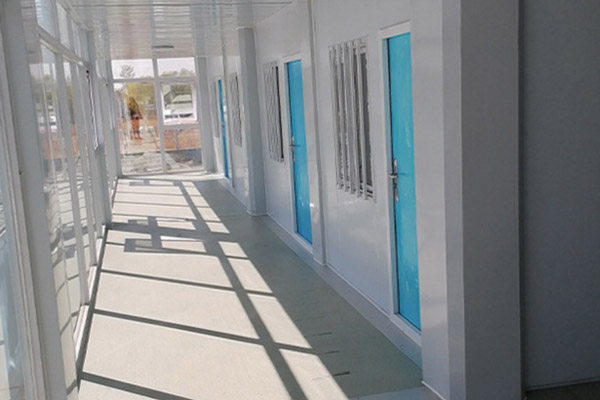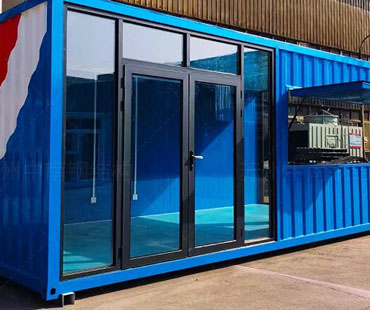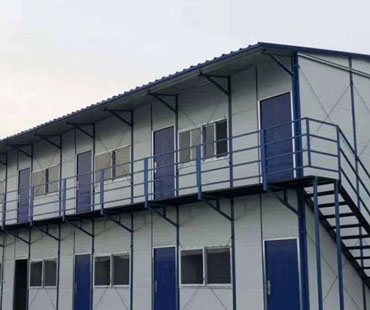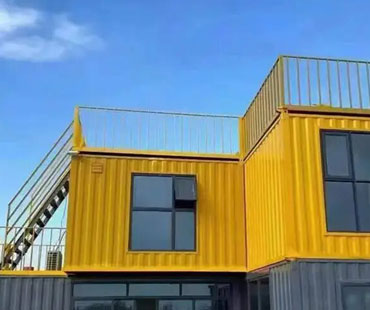In recent years, the construction industry has witnessed a remarkable shift towards sustainable development, driven by the need to address environmental concerns and the increasing demand for affordable housing. One of the most innovative solutions that have emerged from this trend is the use of shipping containers as building materials. Container buildings not only offer an eco-friendly alternative to traditional construction methods but also present a unique aesthetic that appeals to modern sensibilities.
Shipping containers, originally designed for transporting goods across the globe, have been reimagined as versatile building blocks. The concept of using these containers for construction began gaining traction in the early 2000s and has since evolved into a dynamic movement. Factors contributing to their popularity include:
1.Affordability: With a surplus of unused shipping containers available at ports worldwide, they provide a cost-effective building option compared to traditional methods, making home ownership more accessible.
2.Speed of Construction: Container buildings can be constructed quickly due to their modular nature. Prefabrication allows for significant time savings, as the majority of the work can be completed off-site before being transported to the final location.
3.Flexibility and Adaptability: Containers can be easily stacked, combined, or modified to create various layouts and designs. This adaptability makes them suitable for different applications, from single-family homes to multi-story apartment complexes, offices, and even retail spaces.
One of the most compelling reasons for the rise of container buildings is their potential for sustainability. Key environmental benefits include:
1.Recycling and Reuse: Repurposing shipping containers reduces waste and minimizes the need for new building materials. This practice aligns with the principles of a circular economy, promoting resource efficiency.
2.Reduced Carbon Footprint: The use of containers significantly lowers the carbon emissions associated with traditional construction methods. Additionally, many container buildings incorporate sustainable features such as solar panels, rainwater harvesting systems, and energy-efficient materials, further reducing their ecological impact.
3.Minimal Land Use: Container buildings can be designed to take up less space, making them ideal for urban environments where land is scarce. Their vertical build allows for higher density living without the extensive land use associated with traditional housing.

The design potential of container buildings is virtually limitless. Architects and designers are increasingly pushing the boundaries of creativity, using shipping containers to create stunning and functional spaces. Some notable design trends include:
1.Modern Aesthetics: The industrial look of containers can be a distinctive feature of a building, often celebrated for its raw and minimalistic appeal. Large windows, vibrant colors, and innovative landscaping can transform the exterior into a contemporary masterpiece.
2.Open Floor Plans: The interior of container buildings can be designed with open floor plans that maximize space and light. By removing internal walls, designers can create fluid living spaces that feel larger than their actual footprint.
3.Multi-Use Structures: Container buildings can serve multiple functions within a single design. For instance, a single project can house residential units, commercial spaces, and community areas, fostering a sense of neighborhood and collaboration.
While container buildings present numerous advantages, there are challenges that must be addressed to ensure their success in sustainable development:
1.Insulation and Climate Control: Steel containers can experience extreme temperature fluctuations. Proper insulation and climate control systems must be incorporated to ensure comfort in varying weather conditions.
2.Building Codes and Regulations: Navigating building codes and zoning laws can be complex. Developers must work closely with local authorities to ensure compliance with safety and regulatory standards.
3.Public Perception: Despite their numerous benefits, container buildings may still face skepticism from potential homeowners and investors. Education and awareness campaigns can help shift public perception and highlight the advantages of this innovative building approach.
As the world increasingly prioritizes sustainability in all facets of life, it is likely that container buildings will continue to gain momentum. Their combination of affordability, speed, and environmental consciousness aligns perfectly with the growing demand for sustainable development solutions.
Innovations in construction technology, such as 3D printing and smart building techniques, may further enhance the feasibility and appeal of container buildings. The integration of smart home technologies can also revolutionize how we interact with our living spaces, making them more energy-efficient and user-friendly.
Container buildings represent a transformative trend in sustainable development, offering innovative solutions to pressing housing challenges while promoting environmental stewardship. As architects, builders, and communities embrace this approach, container buildings are set to become a defining feature of modern architecture. By prioritizing sustainability, creativity, and adaptability, container buildings are not just a temporary trend; they are a glimpse into a more sustainable and resilient future.


